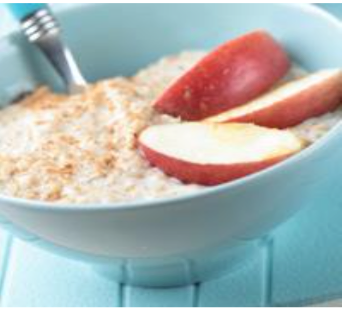In Addition
Vol 4 Issue 3
May/June 2013
Sai Vibrionics offers health information and articles for educational purposes only; this information is not meant as medical advice. Counsel your patients to see their medical doctor about their specific medical condition.
The Hidden Hazards of Microwave Cooking

By now, you probably know that what you eat has a profound impact on your health. The mantra, "You are what you eat" is really true. But you need to consider not only what you eat, but how you cook it.
Eating much of your food raw is ideal. But most of us are not going to be able to accomplish a completely raw diet, and we'll end up cooking some percentage of our food. And here we have many choices: conventional ovens, grills, induction ovens, microwaves etc.
Needles to say, microwave oven is convenient and one of the fastest ways to cook our food. So how does it work?
How do microwave ovens work?
Microwaves are a form of electromagnetic energy, like light waves or radio waves. Microwaves are very short waves of electromagnetic energy that travel at the speed of light. In our modern technological age, microwaves are used to relay long distance telephone signals, television programs, and computer information across the earth or to a satellite in space. But the microwave is most familiar to us as an energy source for cooking food.
Every microwave oven contains a magnetron, a tube in which electrons are affected by magnetic and electric fields in such a way as to produce micro wavelength radiation at about 2450 Mega Hertz (MHz) or 2.45 Giga Hertz (GHz). This microwave radiation interacts with the molecules in food. All wave energy changes polarity from positive to negative with each cycle of the wave. In microwaves, these polarity changes happen millions of times every second. Food molecules - especially the molecules of water - have a positive and negative end in the same way a magnet has a north and a south pole.
In commercial models, the oven has a power input of about 1000 watts of alternating current. As these microwaves generated by the magnetron bombard the food, they cause the polar molecules to rotate at the same frequency millions of times a second. All this agitation creates molecular friction, which heats up the food.
Is it a safe way to cook?
There are not that many studies done on how microwaving affects our food. And even more, results of these studies are quite inconsistent. Some scientists, usually supported by manufacturers or governments, claims that microwaving is quite safe. Others, usually healthy lifestyle enthusiasts, condemn microwaves as the worst kitchen appliance ever created and grave danger to any living beings.
Obviously, more independent studies are needed to prove or disprove such an extreme claim, but it's already clear that microwaving is not the best way to cook our food.
Microwaving destroys the Nutrients in Food
-
A study published in the November 2003 issue of The Journal of the Science of Food and Agriculture found that broccoli "zapped" in the microwave with a little water lost up to 97 percent of its beneficial antioxidants. By comparison, steamed broccoli lost 11 percent or fewer of its antioxidants. There were also reductions in phenolic compounds and glucosinolates, but mineral levels remained intact.
-
A 1999 Scandinavian study of the cooking of asparagus spears found that microwaving caused a reduction in vitamin C.
-
In a study of garlic, as little as 60 seconds of microwave heating was enough to inactivate its allinase, garlic's principle active ingredient against cancer.
-
A Japanese study by Dr. Watanabe showed that just 6 minutes of microwave heating turned 30-40 percent of the B12 in milk into an inert (dead) form.
-
A recent Australian study showed that microwaves cause a higher degree of "protein unfolding" than conventional heating.
Microwaving is not good to warm breast milk
There seems to be a growing body of evidence that suggests that human breast milk or baby formula is changed if heated in a microwave:
-
Microwaving can destroy the essential disease-fighting agents in breast milk that offer protection for your baby. In 1992, Dr. Richard Quan found that microwaved breast milk lost lysozyme activity, antibodies, and fostered the growth of more potentially pathogenic bacteria.
-
Another study about breast milk/infant formula by Lee in 1989 found vitamin content becomes depleted by microwaving, and certain amino acids are converted into other substances that are biologically inactive. Some altered amino acids are poisons to the nervous system and kidneys.
Changes in people who eat microwaved foods
There has been little research on changes in the consumers of food cooked using microwaves. A piece of work carried out by Hertel and Blanc has been quoted extensively and needs following up. Although they found many and serious changes, including decreased haemoglobin levels and increased cholesterol and leukocyte levels, their research was based on just 18 people, all of whom ate a macrobiotic diet only, including Hertel himself. It may be that their findings are equally valid for the general public, but without further evidence, we cannot make that assumption. Tom Valentine, an independent US journalist, published the results of this study in Search for Health in the Spring of 1992.
Breaking Free of Your Microwave: A Few Basic Tips
It's easy to live without microwave, believe it or not. You just have to make a few small lifestyle adjustments, such as:
-
Plan ahead. Take your dinner out of the freezer that morning or the night before so you don't end up having to scramble to defrost a 5-pound chunk two hours before dinnertime.
-
Make soups and stews in bulk, and then freeze them in small-sized freezer bags or other containers. An hour before meal time, just take one out and defrost it in a sink of water until it's thawed enough to slip into a pot, then reheat it on the stove.
-
A toaster oven or convection oven makes a GREAT faux-microwave for heating up leftovers! Keep it at a low temperature -- like 200-250 degrees F (95-120 C) -- and gently warm a plate of food over the course of 20-30 minutes.
-
Prepare your meals in advance so that you always have a good meal available on those days when you're too busy or too tired to cook.
-
Try eating more organic raw food. This is the best way to improve your health over the long run.
Sources:
http://www.huffingtonpost.com/dr-mercola/microwave-cancer_b_684662.html http://www.powerwatch.org.uk/rf/microwaves.asp
http://articles.mercola.com/sites/articles/archive/2010/05/18/microwave-hazards.aspx
http://www.jrussellshealth.org/microwaves.html http://www.safespaceprotection.com/electrostress-from-microwave-ovens.aspx
How Foods High in Fibre Can Help You Keep Cholesterol in Check

Just as eating certain foods — such as those high in saturated fats — can increase harmful cholesterol levels, eating fibre-rich foods can actually help lower it. Scientists are still trying to determine the exact mechanism by which fibre lowers cholesterol, says Linda V. Van Horn PhD, a registered dietician and professor of preventive medicine at Northwestern University’s Feinberg School of Medicine in Chicago.
Dietary fibre, also known as roughage or bulk, includes all parts of plant foods that your body can't digest or absorb. Unlike other food components such as fats, proteins or carbohydrates — which your body breaks down and absorbs — fibre isn't digested by your body. Instead, it passes relatively intact through your stomach, small intestine, colon and out of your body.
Fibre is commonly classified as soluble when it dissolves in water or insoluble if it doesn't. Most plant- based foods, such as oatmeal and beans, contain both soluble and insoluble fibre. However, the amount of each type varies in different plant foods. To receive the greatest health benefit, eat a wide variety of high-fibre foods.
What’s clear is that the cholesterol-controlling benefits are due to soluble fibre. This is found in the flesh of fruit such as pears and apples, vegetables like peas, and whole grains such as oats and barley. The insoluble fibre is indigestible but a necessary part of healthy diet - not for cholesterol-control reasons - it’s the kind that helps with digestion and regularity.
“High-fibre foods that contain soluble fibre appear to affect short-chain fatty acids in the bloodstream,” says Van Horn, “Soluble fibre has the same sort of potential benefit that something like a cholesterol-lowering drug (statin) would have; it blocks the uptake of saturated fat or other harmful types of fat.” Soluble fibre may also help reduce insulin resistance, which seems to play a role in unhealthy cholesterol levels. “Fibre appears to have beneficial effects on both lipid and glucose metabolism,” says Van Horn. This can improve your overall lipid or “fat” profile, resulting in healthier cholesterol levels as well as lower triglyceride levels, another type of fat in the blood.
There is a practical reason why foods with soluble fibre may help with managing cholesterol viz, these foods tend to be lower in fat and more filling than foods without fibre. That means you’re more likely to stick to your diet and achieve a healthy weight with a diet rich in high-fibre foods.
Fibre to Lower Cholesterol: The Research
Research shows that simple daily changes for a diet to lower cholesterol can yield results within a matter of months. According to a controlled study of more than 300 adults published in the Nutrition Journal, people who ate 3 to 4 grams of cereal containing oat fibre daily for four weeks lowered their low- density lipoprotein (LDL) or “bad” cholesterol by about 5%. Also, this was the first study to show that including fibre in a diet for high cholesterol is helpful to people of different ethnicities.
More good news: Oats aren’t the only source of helpful fibre. A study of 160 postmenopausal women compared prune and dried apple consumption to find out how fruit fibre affects heart disease risk factors, such as cholesterol. Publishing in the Journal of the Academy of Nutrition and Dietetics, the research team reported that women who ate the equivalent of two dried apples daily saw an improvement in their cholesterol levels by as much as 16 percent within three months (although prunes were also helpful for lowering total cholesterol).
How Much Fibre Do You Need each day?
The Institute of Medicine, which provides science-based advice on matters of medicine and health, gives the following daily recommendations for adults: Men should have a daily goal of 30 to 38 grams of fibre, and women should have a daily goal of 21-25 grams. It’s noted that most people don’t even get 25 percent of the goal. Try adding these high-fibre foods to your diet: Oat bran, rice bran, celery, carrots, beans, peas, pears, oranges, barley, steel-cut oats, almonds.
Need some ideas for getting that fibre into your diet each day? Try these menu additions:
-
Snack on dried or whole fruits or veggies.
-
Load up on vegetables and beans in casseroles and soups.
-
When baking, use whole-grain flours to replace part or all of the white flour.
-
Make hot cocoa from scratch with milk and cocoa powder, which contains fibre.
-
Pick high-fibre options over high-fat options - for example, add beans to a burrito instead of cheese and sour cream.
Benefits of a High-Fibre Diet
A high-fibre diet has many benefits, which include:
-
Normalizes bowel movements. Dietary fibre increases the weight and size of your stool and softens it. A bulky stool is easier to pass, decreasing your chance of constipation. If you have loose, watery stools, fibre may also help to solidify the stool because it absorbs water and adds bulk to stool.
-
Helps maintain bowel health. A high-fibre diet may lower your risk of developing haemorrhoids and small pouches in your colon (diverticular disease). Some fibre is fermented in the colon. Researchers are looking at how this may play a role in preventing diseases of the colon.
-
Lowers cholesterol levels. Soluble fibre found in beans, oats, flaxseed and oat bran may help lower total blood cholesterol levels by lowering LDL levels. Studies have shown that fibre may have other heart-health benefits, such as reducing blood pressure and inflammation.
-
Helps control blood sugar levels. In people with diabetes, fibre - particularly soluble fibre - can slow the absorption of sugar and help improve blood sugar levels. A healthy diet that includes insoluble fibre may also reduce the risk of developing type 2 diabetes.
-
Aids in achieving healthy weight. High-fibre foods generally require more chewing time, which gives your body time to register when you're no longer hungry, so you're less likely to overeat. Also, a high-fibre diet tends to make a meal feel larger and linger longer, so you stay full for a greater amount of time. And high-fibre diets also tend to be less "energy dense," which means they have fewer calories for the same volume of food.
Another benefit attributed to dietary fibre is prevention of colorectal cancer. However, the evidence that fibre reduces colorectal cancer is mixed. Increasing your intake of fibre to recommended levels each day can keep things moving and contribute to improving your health.
Institute of Medicine, 2012 www.mayoclinic.com/health/fiber/ www.everydayhealth.com
***ATTENTION PRACTITIONERS***
Our website is www.vibrionics.org. You will need your Registration number to login to the Practitioner Portal. If your email address changes, please inform us at [email protected] as soon as possible.
You may share this newsletter with your patients. Their questions should be directed to you for answers or for research and response. Thank you for your cooperation.
